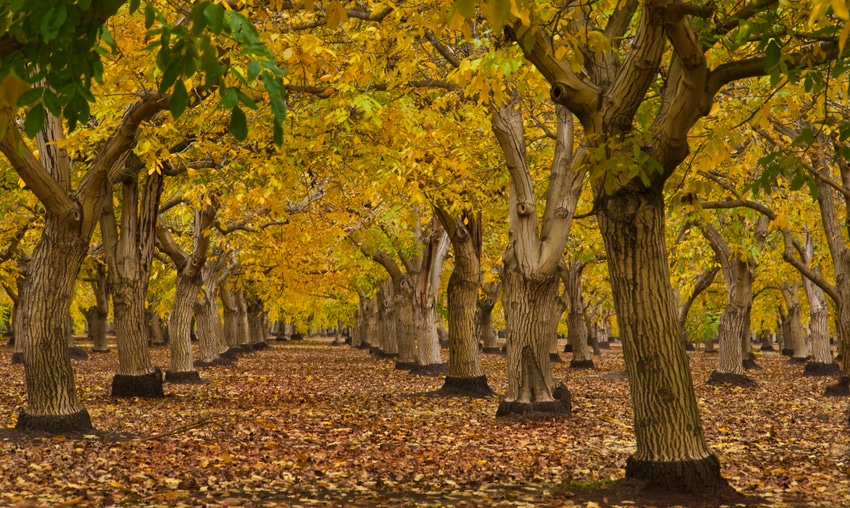
Grower interest in orchard biofumigation is driving extensive research in California’s northern Sacramento Valley. This process uses cover crops to suppress nematode populations in the soil which can disrupt water and nutrient uptake by the plant.
While this process is more common in annual cropping systems, University of California (UC) Cooperative Extension Orchards Advisor Dani Lightle says walnut growers in Glenn, Butte, and Tehama counties are interested in biofumigation either in pre-plant or young walnut orchard situations where root lesions caused by nematodes occur.
Chemical fumigation options for walnut orchard sites are becoming limited especially if adjacent to sensitive sites including schools, says Lightle. Sites which have tested positive for the harmful nematode species must be treated prior to planting or tree productivity can be compromised.
Once trees are in the ground, there are even fewer options for nematode suppression. Biofumigation, if proven effective in perennial systems, could overcome both situations. The nematode species targeted include root lesion, root knot, and ring nematodes.
Lightle says winter cover cropping is common in the Northern California walnut-growing regions especially in young orchards. Cover crops are primarily grown between tree rows to improve soil quality and prevent erosion during rain events. Typically, the cover crop is mowed after flowering and not incorporated into the soil.
With biofumigation, the cover crop would help suppress nematodes. The crop would be shredded and incorporated into the soil which is critical to the biofumigation process. Since traditional orchard floors are managed smoothly, this step would make a float pass necessary after incorporation.
Lightle and Andreas Westphal, nematology specialist at the UC Kearney Agriculture Research and Extension Center (KARE) located at Parlier, are conducting the biofumigation research in walnut. Proof of grower interest in this research was the number of test site offers from walnut growers.
The biofumigation process starts with a cover crop - seeded, grown, chopped or mowed, and incorporated into the soil. There, it releases compounds that suppress nematode populations.
The research is funded by the California Department of Pesticide Regulation.
The research will look at cover crop species with high concentrations of glucosinolates. When the cover crop is shredded and the plant cells rupture, a protein called myrosinase will be released. This protein and plant glucosinolates form isothiocynates which are active against soil pathogens if properly incorporated into the soil.
One example of isothiocynate is methyl isothiocynate (MITC), the active ingredient generated from metam sodium formulated as Vapam, a soil fumigant product from the Amvac Chemical Company. Metam sodium breaks down in soil to produce MITC which is active against soil-borne pathogens when applied properly.
Brassica species as cover crops to be screened for effectiveness against nematodes include tillage radish, oilseed radishes, mustards, and marigolds. The most promising will be planted in replicated trials in Glenn and Butte counties and at UC’s KARE.
In an orchard biofumigation process, the chosen cover crop is planted into a prepared seedbed between tree rows and managed to produce a maximum amount of biomass. At flowering, the cover is shredded to release the glucosinolates and myrosinase, and incorporated into the soil where the isothiocyanates are released.
Lightle says this process will hopefully reduce the harmful nematode populations.
She says some areas of this biofumigation process need further study, including the selection of high glucosinolate-level crops that are not hosts to nematode pests, plus the optimum planting and harvest times.
The researchers will also examine toxicity risks posed by isothiocyanates to vulnerable tree roots. Lightle says the research will include the biomass incorporation process and potential tree root damage, and whether plastic soil sealing would facilitate the fumigation process.
The research team will also determine the best orchard age that could benefit the most from biofumigation – pre-plant, non-bearing, or mature.
About the Author(s)
You May Also Like




